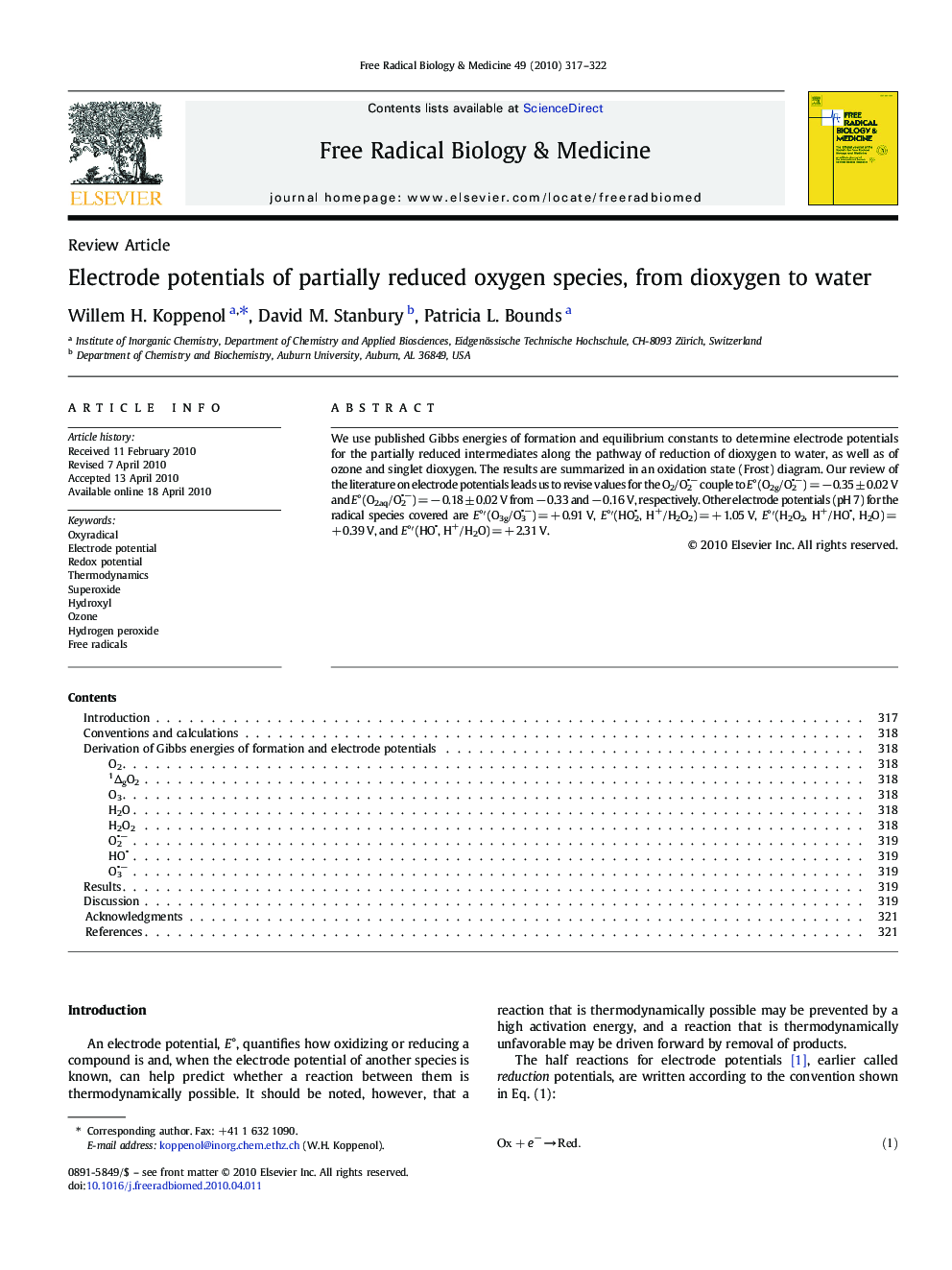| Article ID | Journal | Published Year | Pages | File Type |
|---|---|---|---|---|
| 1909429 | Free Radical Biology and Medicine | 2010 | 6 Pages |
Abstract
We use published Gibbs energies of formation and equilibrium constants to determine electrode potentials for the partially reduced intermediates along the pathway of reduction of dioxygen to water, as well as of ozone and singlet dioxygen. The results are summarized in an oxidation state (Frost) diagram. Our review of the literature on electrode potentials leads us to revise values for the O2/O2•− couple to E°(O2g/O2•−) = − 0.35 ± 0.02 V and E°(O2aq/O2•−) = − 0.18 ± 0.02 V from − 0.33 and − 0.16 V, respectively. Other electrode potentials (pH 7) for the radical species covered are E°′(O3g/O3•−) = + 0.91 V, E°′(HO2•, H+/H2O2) = + 1.05 V, E°′(H2O2, H+/HO•, H2O) = + 0.39 V, and E°′(HO•, H+/H2O) = + 2.31 V.
Keywords
Related Topics
Life Sciences
Biochemistry, Genetics and Molecular Biology
Ageing
Authors
Willem H. Koppenol, David M. Stanbury, Patricia L. Bounds,
